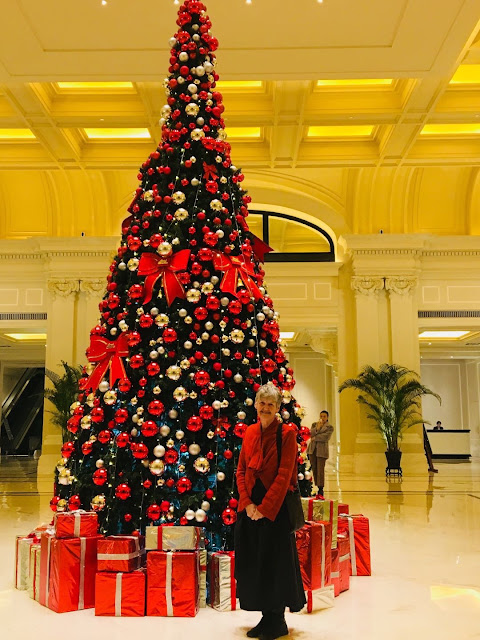When I think of tea and tea ceremonies, I think of the Japanese.
Little did I realise that I was coming to one of the tea centres of China. Before I came here, each time I did an
internet search on Yixing, the information that came up was about tea
pots. They have been making the small
unglazed purple clay teapots for about 700 years.
One wonderful thing I have noticed about this part of China is that people socialise with tea. In my country we tend to socialise with alcohol. You wouldn’t usually get together with friends especially in the evenings without being offered a glass of some kind of alcohol. Here, day and night, people sit around the tea table and chat over numerous tiny cups of tea. You slow down and realise the importance of just being “in the moment” with your friends.
When you go into a shop, business or home, there is often an
area set up for drinking tea. There will be a larger chair at the middle of the
table for the person who serves the tea.
On the table in front of them is a
large tea tray usually made of heavy wood with ridges carved into it. The ridges allow spilt tea to drain away. Below we are at the studio of Wang Chao Hong, the maker of tea pots. Chao Hong is at the end of the table in green. Note the tea tray and items needed when you serve tea.
There is much paraphernalia that goes with serving tea:
- tea pots, usually one for each type of tea
(white, green black, red or P’eur and there are bound to be more types of tea) as the tea pot will absorb the flavour of
the tea.
- tiny tea cups.
Such a variety, some with beautiful glazes, some unglazed.
· - larger bowl for keeping the cups in water.
· - tea pets, be they dragons, pigs, water buffalo
etc (I don’t quite “get” the tea pets)
· - wooden cups containing the various tea
implements, most of which I don’t know the use of.
· - tea caddies,
· - a strainer (often ceramic)
· - a stand containing a tea light that will keep
the tea warm.
· - a water source and means of heating the water. (No having to get up and refill the kettle.
· - bowls of nibbles including fruit, sweets, nuts
and other snacks
The tea is made in a small pot and then poured through a
strainer into a jug and served to guests from there. Cups are small and your host will ensure that
your cup is never empty. They top up the
teapot with water and make a new brew when they feel it is needed. Any tea not used might be poured over the
teapots and tea pets on the table. When
the unglazed teapots are wet, the beautiful colours of the glaze are brought
out.
Below is my individual tea service at the beautiful tea house in Forest Park, Yixing.
The small Yixing tea pots on the left. I haven't seen people drink from these larger mugs.
Tea trays come in all shapes and sizes and the workmanship in some is unique.
The pots and mugs on the left are sitting on a bamboo tea tray. I think these are beautiful but they are not admired by tea aficionados as they don't last. Wooden tea trays can be VERY heavy
One cold day, I was walking and couldn’t resist having a
look in one of the tea pot shops I passed.
The man, generously offered me tea and seeing that my hands were cold he
filled an empty teapot with hot water so that I could sit and warm my hands on
it. This surely harks back to a gentler
time when we didn’t rush as much and people made time for each other
One of my lovely students, Evonne took me for a drive to Dingshan about 20 minutes away. This is the tea pot capital of China. People come from all over China for Dingshan teapots. A teapot made by a master can bring up to US$20,000 or more.
Don’t think "quaint old Chinese village", it’s modern big shops, but EVERYTHING is related to tea with some ceramics added. It’s a town of probably 200,000 people but the whole town revolves around tea pots, tea, tea strainers, tea cups, tea trays (that is a whole world of it’s own) and different ways of heating water and keeping the tea warm. etc etc.
It is the artisans and what they make that bring me joy and this was a whole town as an art gallery devoted to tea.













































